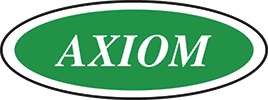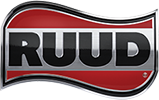Waiting to get the latest updates from the Consortium for Energy Efficiency (CEE) about performance requirements for HVAC and water heaters for the tax credits we’ve been hearing about for a while? They’re here.
According to the CEE, these cover the specifications for eligibility for federal 25C tax credits of up to $2000 that were put into play by the Inflation Reduction Act. The revised levels have been approved.
As you probably remember, HVAC and water heaters are the largest drain on residential energy loads, which is why the government zeroed in on those two areas for opportunities for energy savings.
Our friends at RUUD boiled down the changes for us:
- It now includes an introduction of Path A or Bath B choice for split heat pumps.
- There’s now a unified national set of split heat pump requirements, eliminating North/South and Ducted/Ductless distinctions.
- It kept lower SEER2 for heat pumps and packaged products.
- The required Qualified Manufacturer ID (QMID) is K3A8.
Qualifying equipment:
Split AC
Packaged AC
Split Heat Pumps Path A
Split Heat Pumps Path B
Packaged Heat Pumps
For a complete list of qualifying equipment, refer to this chart from RUUD.
A detailed breakdown from the CEE
Directly from the official CEE website, here is the longer version, outlining the changes in detail.
Residential Electric HVAC Equipment
CEE residential electric HVAC equipment specifications cover central air conditioners (CACs) and air-source heat pump (ASHP) equipment. Highlighted updates from this revision include:
- Creating two pathways for eligibility. One pathway for heating-dominated applications and whole home electrification scenarios; the other pathway for cooling-dominated and dual-fuel applications.
- Adding an Advanced Tier for split ASHPs that optimizes for cold climate conditions, consistent with the US Department of Energy DOE Cold Climate Heat Pump Challenge Specification.
- Referencing the industry consensus definition of grid-flexible heat pumps (AHRI Standard 1380) for load management requirements, and requiring this criteria for all tiers beginning in January, 2026.
Residential Water Heating
The primary driver for the residential electric water heater specification revision is to maximize the energy savings and demand flexibility potential of heat pump water heater programs.
The revised specifications include:
- Tax credit requirements are unchanged from 2024.
- Referencing the industry consensus for grid flexible water heaters (AHRI Standard 1430) for automated demand response requirements, and requiring this criteria for all CEE tiers beginning in January, 2026.
- Creating a more stringent Advanced Tier with ≥ 3.30 UEF for split-system and 120V heat pump water heaters that will recognize market leadership by manufacturers.
Residential Room Heat Pumps
Over the course of the last year, CEE has been working to develop a first-of-its-kind Room Heat Pump specification that enables more equitable electrification and decarbonization. These products have the potential to replace room air conditioners, improving upon cooling efficiency while adding efficient heating capabilities. Beyond the notable performance achieved by models that meet CEE’s specification, the unique form factor of room heat pumps provides opportunities for renters and multi-family building occupants to have improved access to new efficient technologies.
The scope of the proposed specification includes:
Three tiers (Tier 1, Tier 2, Advanced Tier) with increasingly stringent levels of performance that deliver efficiency coupled with adequate capacity relative to lower ambient conditions.
- Tier 1 sets minimum efficiency levels for qualifying products to sufficiently perform efficient heating and cooling in temperate climates.
- Tier 2 provides levels that accommodate a broader range of low outdoor temperatures that should perform well in most US and Canadian jurisdictions.
- Advanced Tier specifies levels that can provide even greater capacity and perform in still lower ambient conditions for climates with temperatures consistently below 5˚F.”
And there you have it. Pass this info along to your customers so they can get in on these savings! Questions? Contact your local Goodin branch. We’re here to help!






